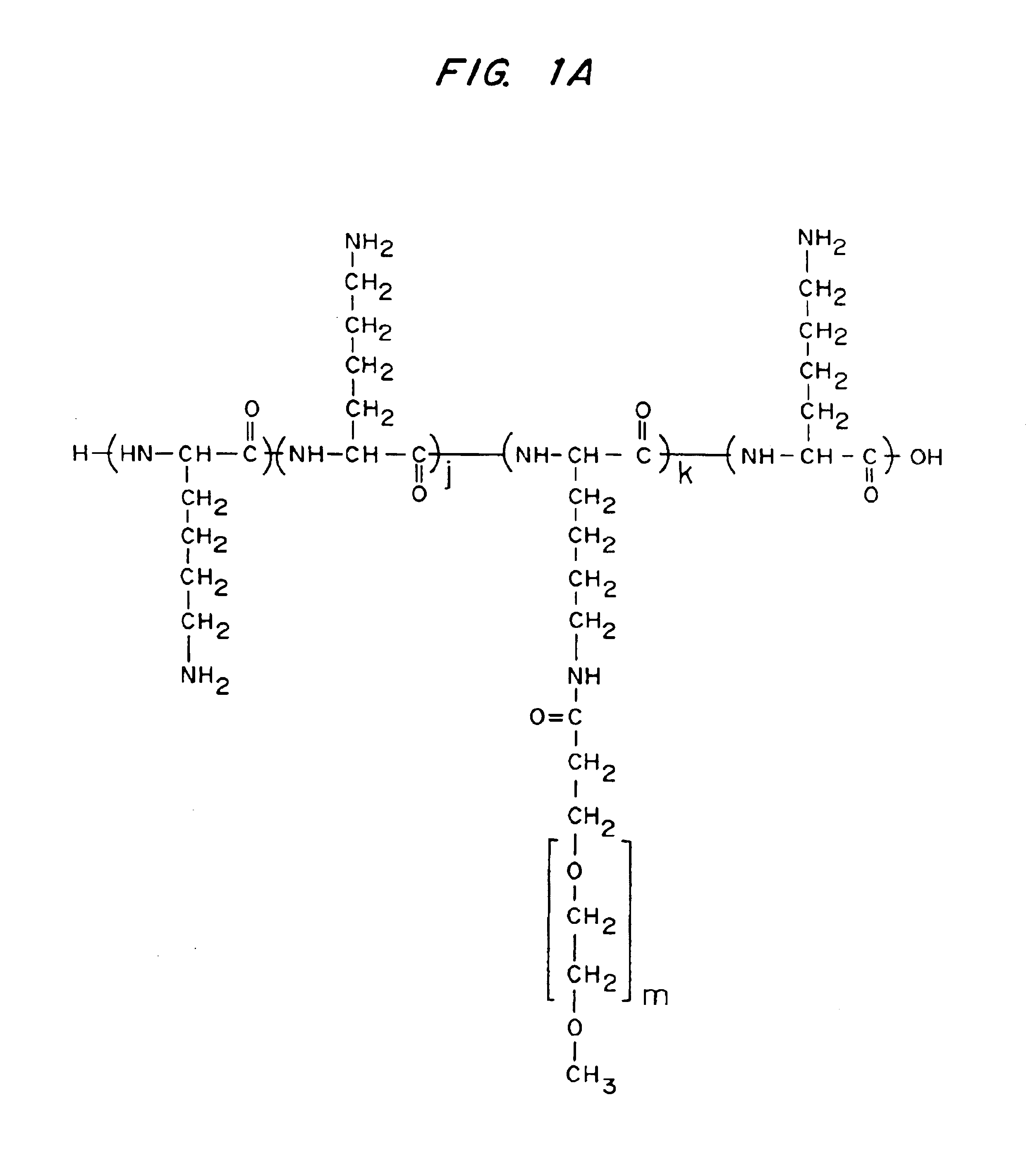Multifunctional polymeric surface coatings in analytic and sensor devices
- Summary
- Abstract
- Description
- Claims
- Application Information
AI Technical Summary
Benefits of technology
Problems solved by technology
Method used
Image
Examples
example 1
PLL Grafted with Monomethoxy PET, PLL-g-PEG; Application to Wave Guide Substrate
[0155]The following describes the use of PLL grafted with non-modified monomethoxy PET, PLL-g-PEG, for which the polymer architecture has been optimized to achieve optimum or close to optimum protein resistance for application in analytical or sensing tasks. For clarity, the following system of abbreviations will be used when referring to the various polymers discussed in this paper: PLL(mol. wt. PLL)-g[graft ratio]-PEG(mol. wt. PEG) signifies that the graft copolymer has a PLL backbone of molecular weight of (mol. wt. PLL) in kD, a graft ratio of lysine-mer / PEG side chain and PEG side chains of molecular weight (mol. wt. PEG) in kD.
Synthesis of PLL-g-PEG
[0156]Table 1 shows the details of the masses and solvents that were used to synthesize the different polymers according to the following procedure. PLL of mol. wt. 20,000 or 375,000 (Sigma, St. Louis, Mo., USA) was dissolved in 50 mM sodium borate buffe...
example 2
Application of Biotin-modified PEG-grafted PLL
[0188]This example refers to the use of biotin-modified PEG-grafted PLL for application on chips for bioaffinity sensor assays using the biotin-streptavidin-biotin recognition assay.
Synthesis of the Functionalized, Biotinylated Copolymer
[0189]PLL of mol. wt. 20,000 (Sigma, CH) was dissolved in 50 mM sodium tetraborate buffer, pH 8.5 at a concentration of 40 mg / ml. The solution was filter sterilized (0.2 gm pore-size filter). Solid n-hydroxysuccinimidyl ester of methoxypoly(ethylene glycol) proprionic acid (mol. wt. 2,000) (SPA-10 PEG, Shearwater Polymers Europe, Inc., NL), and -biotin, -hydroxysuccinimidyl ester of poly(ethylene glycol)-carbonate (mol. wt. 3,400) (NHS-PEG-biotin, Shearwater Polymers Europe, Inc., NL) in the desired stochiometric ratio were added to the dissolved PLL solution. The reaction was allowed to proceed for 6 hr at room temperature, after which the reaction mixture was dialyzed (Spectra / Por, MWCO 6-8000, Spectrum...
PUM
| Property | Measurement | Unit |
|---|---|---|
| Mass | aaaaa | aaaaa |
| Volume | aaaaa | aaaaa |
| Volume | aaaaa | aaaaa |
Abstract
Description
Claims
Application Information
 Login to View More
Login to View More - R&D
- Intellectual Property
- Life Sciences
- Materials
- Tech Scout
- Unparalleled Data Quality
- Higher Quality Content
- 60% Fewer Hallucinations
Browse by: Latest US Patents, China's latest patents, Technical Efficacy Thesaurus, Application Domain, Technology Topic, Popular Technical Reports.
© 2025 PatSnap. All rights reserved.Legal|Privacy policy|Modern Slavery Act Transparency Statement|Sitemap|About US| Contact US: help@patsnap.com



